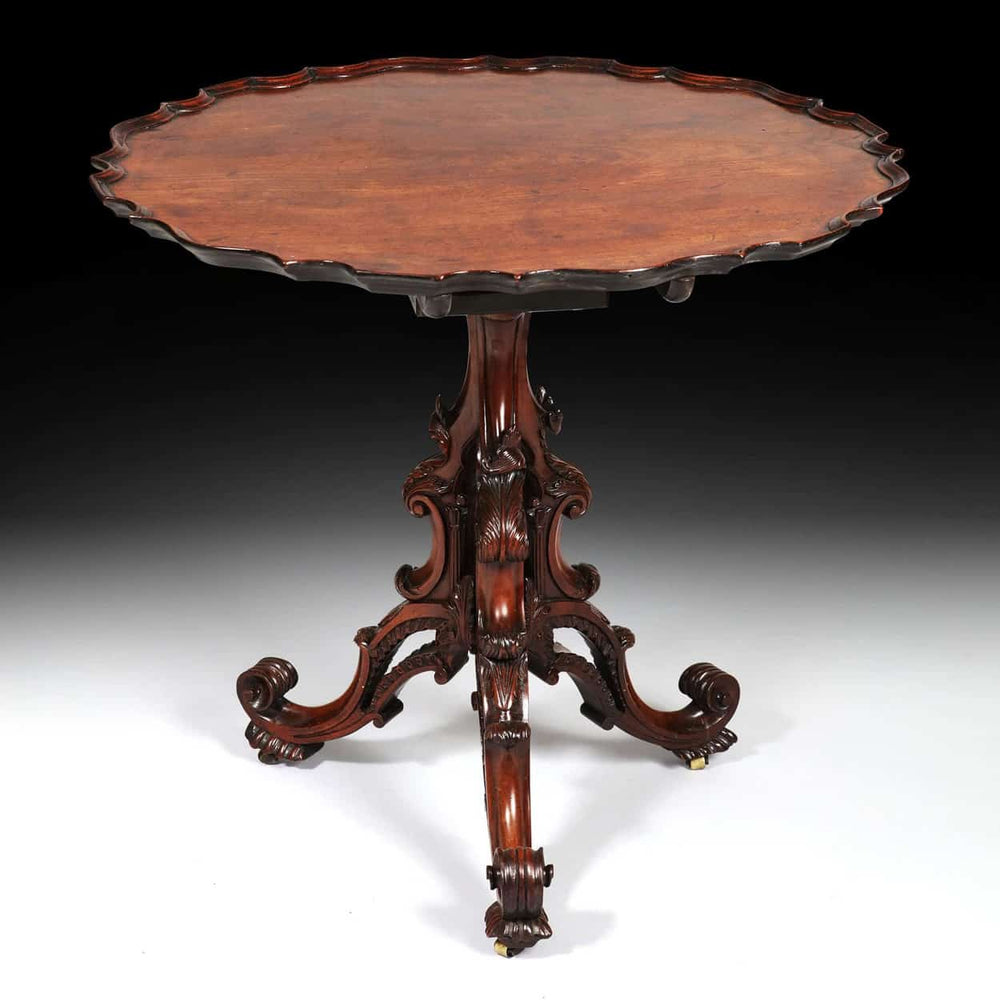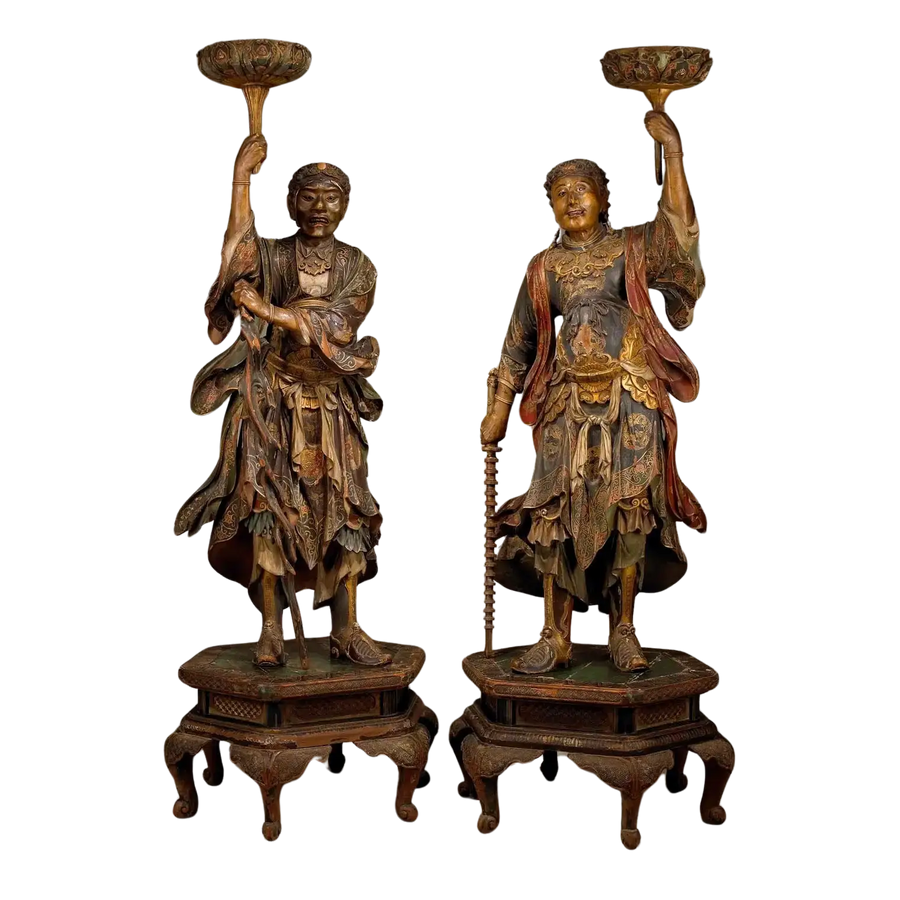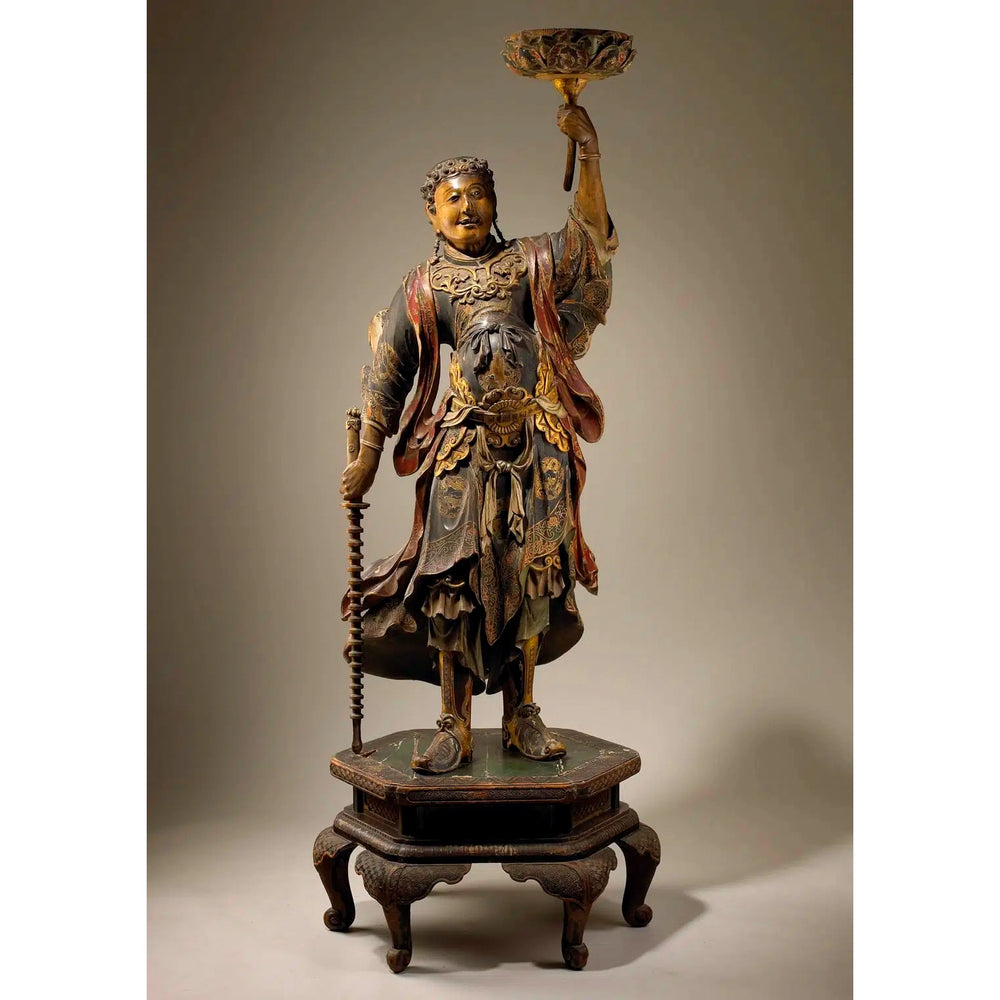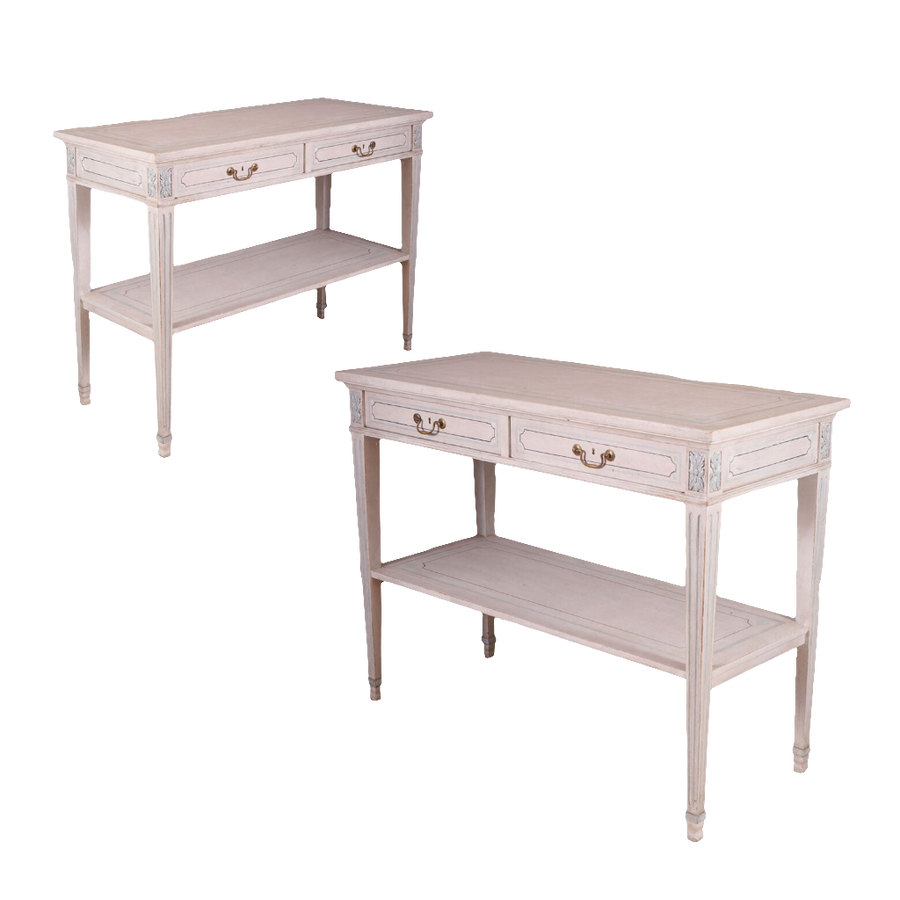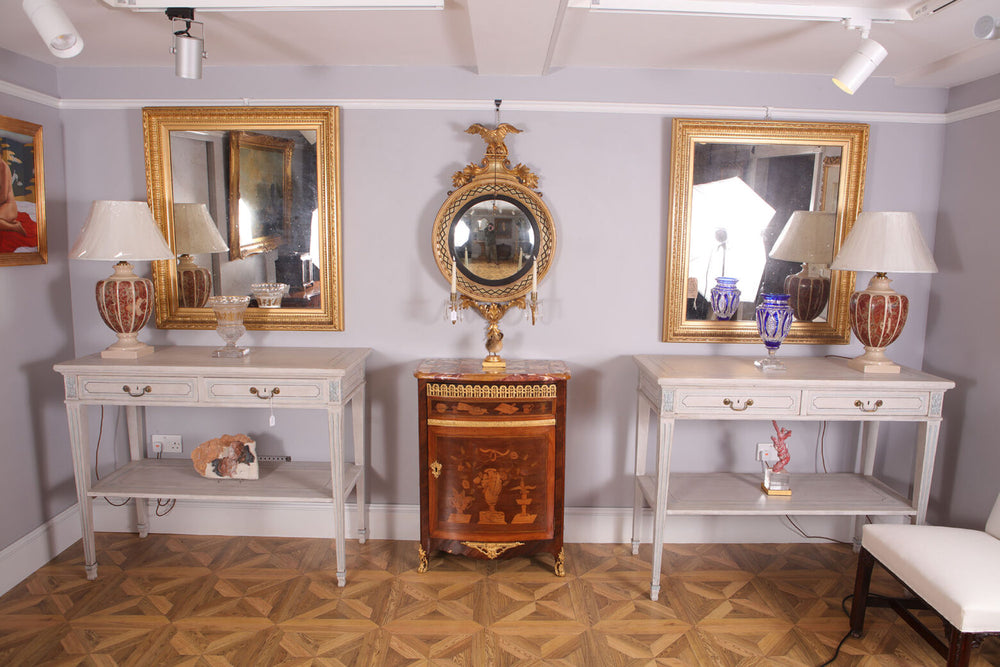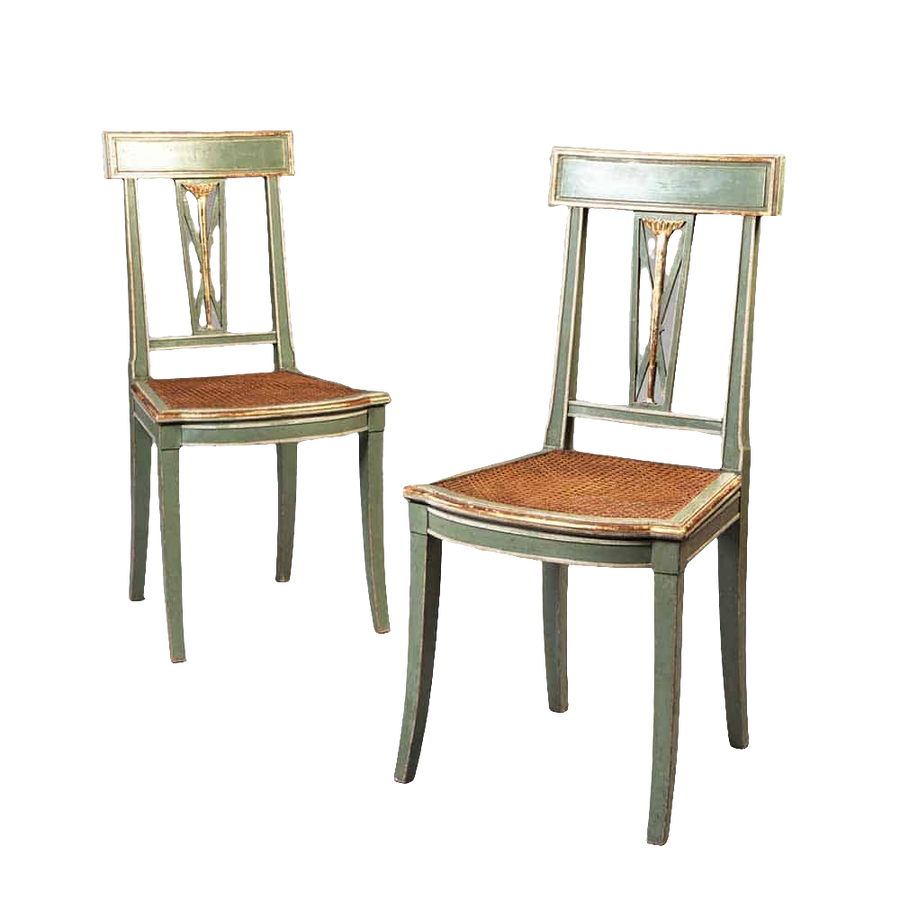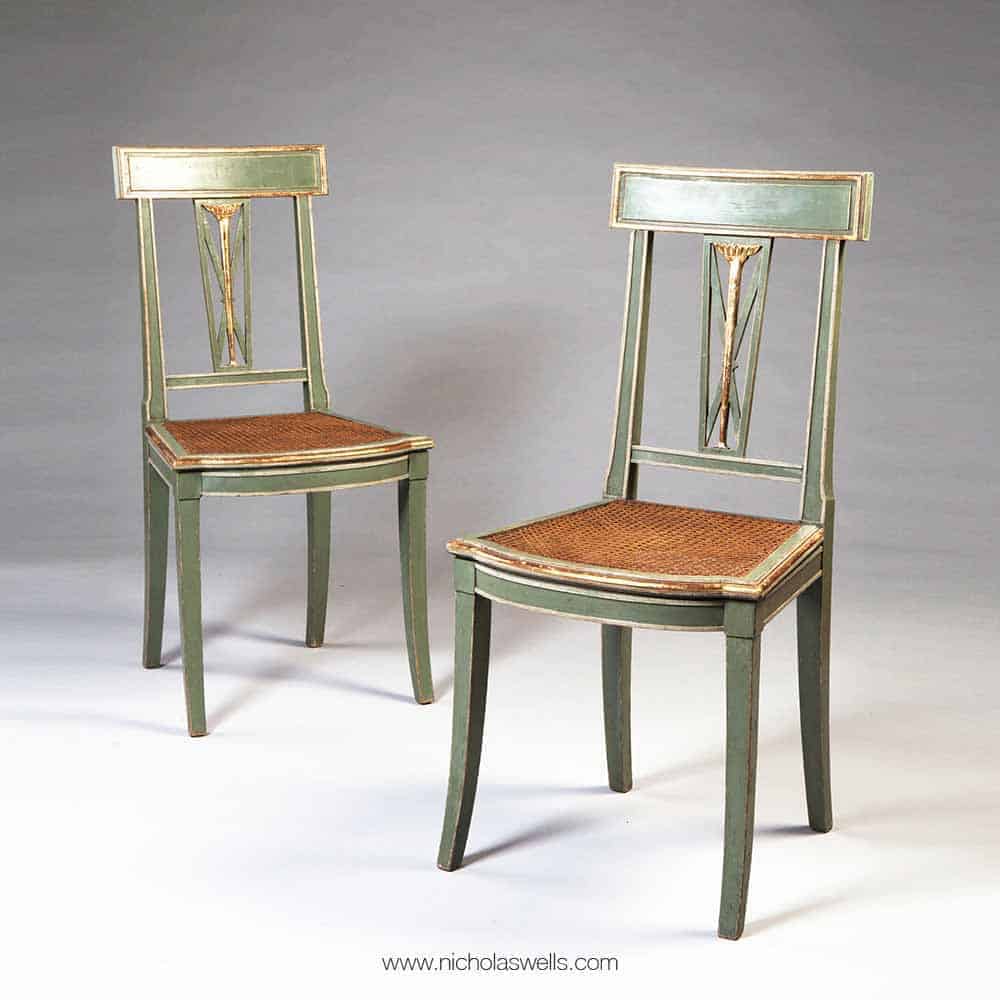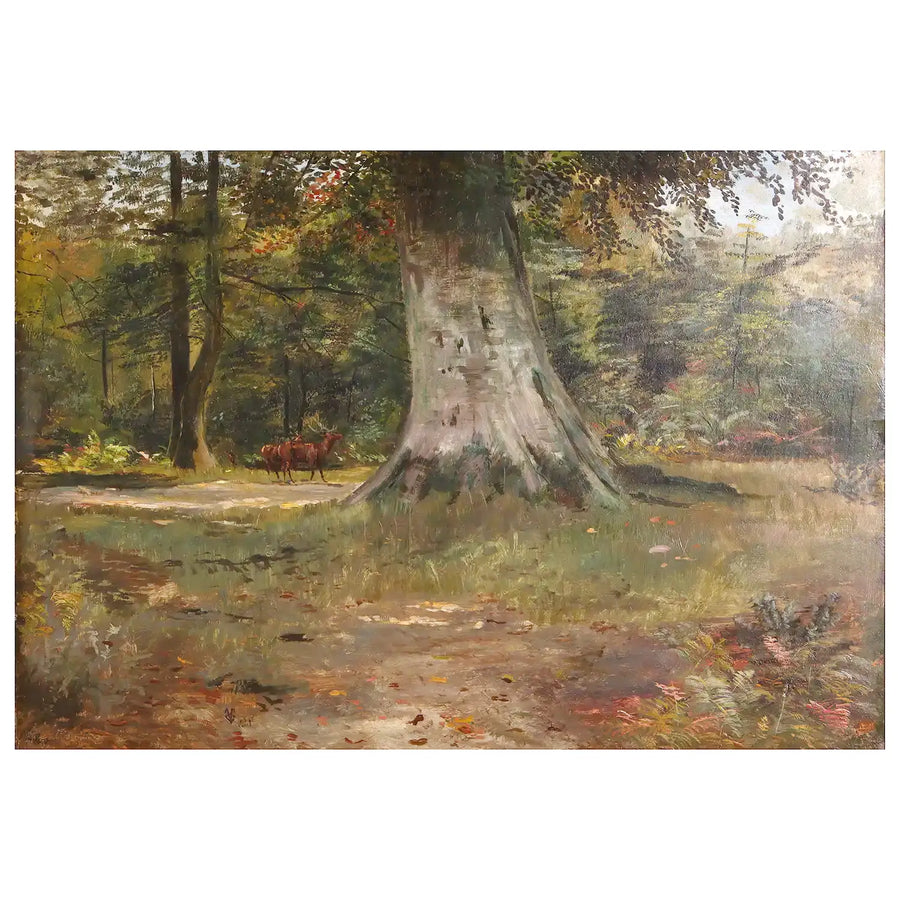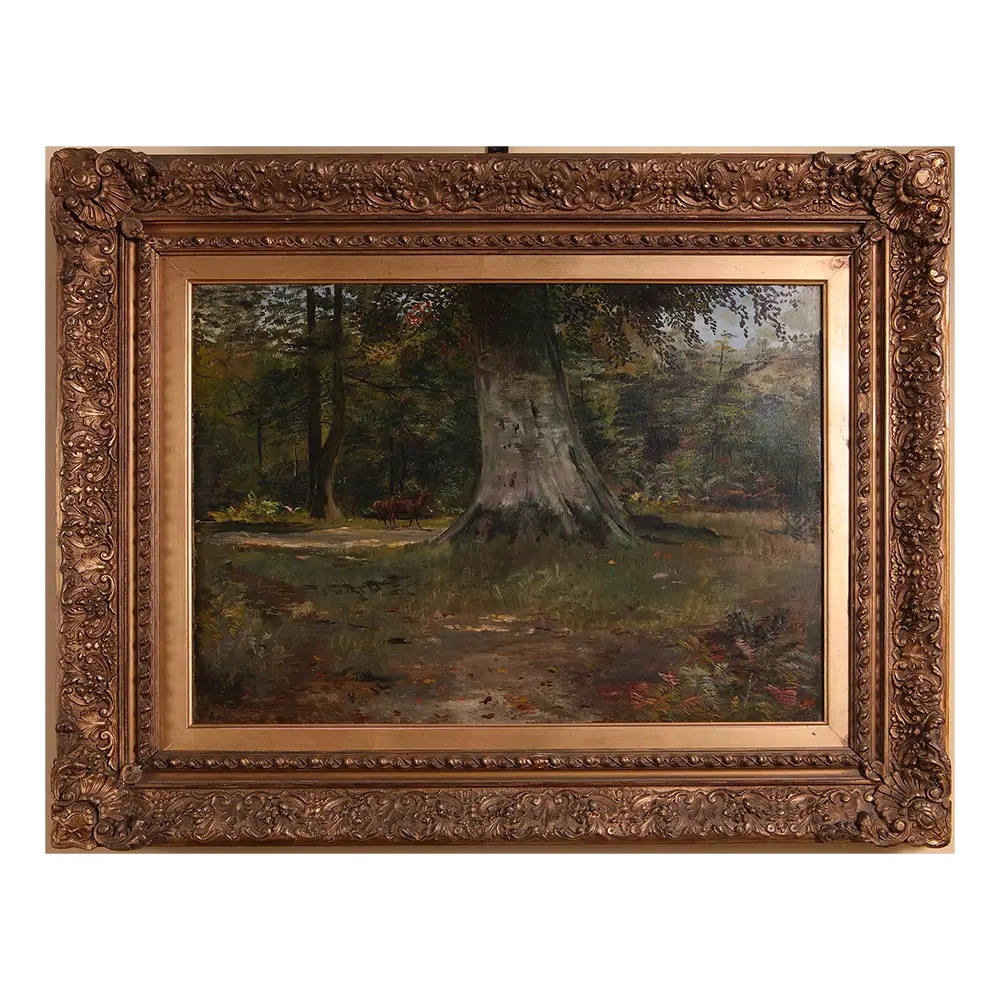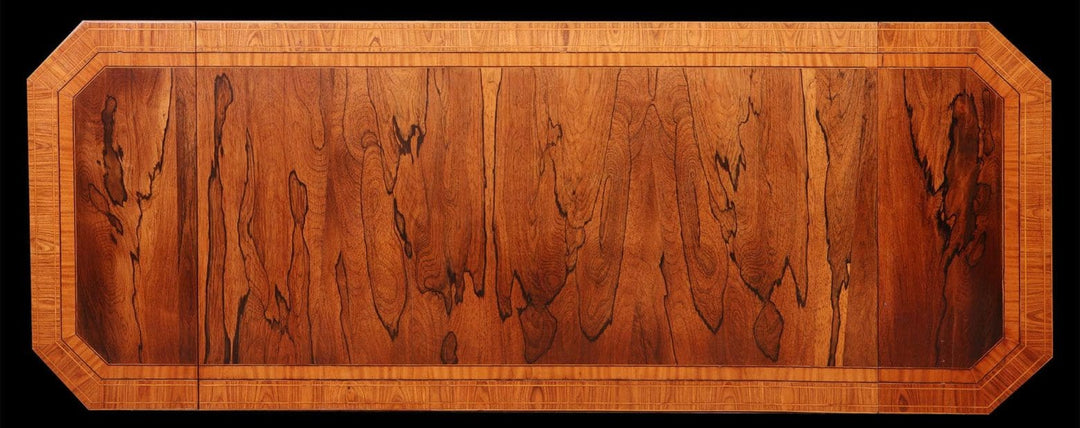
Beech is one of the most versatile and widely used native timbers in English furniture-making. With its pale cream to light reddish-brown colouring and fine, even grain, beech was particularly valued for its strength, flexibility, and smooth finish. While rarely chosen for the grandest cabinet furniture, beech played an essential role in vernacular and utilitarian forms, especially chairs, where its durability and bendability made it indispensable.
Origins and Qualities
Native to Britain and Europe, beech (Fagus sylvatica) grows in abundance and produces a hard, close-grained timber. Although less decorative than walnut or mahogany, its relative affordability, ease of turning, and capacity to withstand repeated wear gave it great appeal in workshops across the country. Beech was often stained, painted, or polished to imitate more fashionable woods, extending its versatility in everyday furniture.
Decorative Uses
Though plain in appearance, beech can display subtle flecking when quarter-sawn, adding gentle visual interest. Its neutral tone made it ideal as a structural timber to be veneered with more exotic woods such as walnut, mahogany, or rosewood. It was also frequently used in painted furniture, particularly in the 18th and 19th centuries, where its smooth grain took paint exceptionally well.
Beech in Vernacular Furniture
Beech’s most important role was in chair-making. It was the principal timber used for turned components in both Windsor chairs and ladder-back country chairs, its strength and workability lending itself perfectly to spindles, stretchers, and legs. When combined with elm or ash seats, beech created durable chairs suited to everyday use in homes, inns, and farmhouses throughout the 18th and 19th centuries. Beech was also employed in workaday tables, stools, and utility furniture, where practicality was paramount.
Makers and Legacy
Although not commonly associated with great cabinetmakers such as Chippendale or Gillows, beech was nonetheless essential to the English furniture trade. Its role in chair-making, in particular, makes it one of the defining timbers of vernacular English furniture. In the 19th century, beech was also used in the early bentwood furniture pioneered by Thonet in Austria, further demonstrating its flexibility and enduring value.
Today, antique beech furniture is appreciated both for its humble honesty and for its structural importance in some of the most enduring English forms, particularly the Windsor chair. Whether left plain, stained, or painted, beech continues to represent the practical ingenuity of English country craftsmanship.





